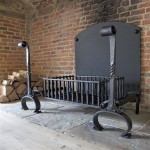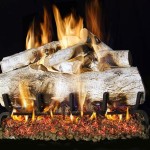Replacement Gas Fireplace Insert Near Me: A Comprehensive Guide
For homeowners seeking to enhance the ambiance and heating efficiency of their existing fireplaces, a replacement gas fireplace insert offers a practical and aesthetically pleasing solution. Finding a suitable "replacement gas fireplace insert near me" involves understanding various factors, including insert types, sizing considerations, installation procedures, and cost estimations. This article provides a comprehensive overview of these elements to facilitate informed decision-making.
Understanding Gas Fireplace Insert Options
Gas fireplace inserts are self-contained units designed to fit within an existing fireplace opening. They offer several advantages over traditional wood-burning fireplaces, including improved energy efficiency, reduced emissions, and ease of use. Gas inserts are available in various styles and fuel types to suit diverse homeowner preferences.
Direct vent gas inserts are a popular choice due to their enhanced safety and efficiency. These units draw air from outside the home for combustion and vent exhaust gases directly outdoors through a sealed venting system. This eliminates the need for a traditional chimney and minimizes the risk of carbon monoxide exposure within the living space. Direct vent inserts are often more expensive than other types but offer superior performance and peace of mind.
Vent-free gas inserts, also known as ventless inserts, do not require a chimney or venting system. They burn propane or natural gas and release combustion gases directly into the room. While vent-free inserts offer installation flexibility and can be more affordable upfront, they require careful consideration of safety factors. Proper ventilation is crucial to prevent the buildup of carbon monoxide and other harmful gases. Many jurisdictions have restrictions or prohibitions on the use of vent-free appliances, so it is essential to check local building codes before installation.
B-vent gas inserts utilize an existing chimney for venting. These inserts are typically less expensive than direct vent models but may require chimney modifications or repairs to ensure safe and efficient operation. The chimney must be properly sized and inspected to ensure it can adequately handle the exhaust gases produced by the insert. A professional inspection is recommended to assess the condition of the chimney and determine the suitability of a B-vent insert.
The choice between natural gas and propane inserts depends on the availability of a natural gas line and the homeowner's preference. Natural gas is generally less expensive than propane but requires a connection to a municipal gas supply. Propane inserts can be used in areas without natural gas service and offer greater fuel storage flexibility. Propane tanks can be installed above ground or buried underground, depending on local regulations and aesthetic considerations.
Determining the Correct Size and BTU Output
Selecting the appropriate size and BTU (British Thermal Unit) output of a gas fireplace insert is crucial for optimal heating performance and energy efficiency. An undersized insert may not adequately heat the room, while an oversized insert can lead to overheating and wasted energy. Several factors influence the sizing decision, including the size of the room, insulation levels, climate zone, and desired heating performance.
To determine the appropriate BTU output, calculate the square footage of the room where the insert will be installed. Multiply the square footage by a factor that accounts for insulation levels and climate. In colder climates with poor insulation, a higher BTU output may be necessary. Consult with a qualified HVAC professional to determine the optimal BTU output for your specific needs.
Measuring the existing fireplace opening is essential for ensuring a proper fit. Measure the width, height, and depth of the firebox to determine the maximum insert dimensions. It is also important to consider the clearances required around the insert for safe operation. Refer to the manufacturer's specifications for detailed clearance requirements.
Some gas fireplace inserts come with adjustable flame heights and heat output settings, allowing homeowners to customize the heating performance to their preferences. These features can enhance energy efficiency by allowing users to reduce the heat output during milder weather or when the room is adequately heated.
Beyond BTU output, consider the heating technology employed by the insert. Some models utilize convective heating, which circulates warm air throughout the room using a blower fan. Others rely on radiant heating, which directly warms objects and surfaces in the room. Convective heating is generally more effective for larger spaces, while radiant heating can provide more localized warmth.
Installation and Safety Considerations for Gas Fireplace Inserts
Proper installation of a gas fireplace insert is paramount for safety and performance. It is highly recommended to hire a qualified and licensed technician to perform the installation. Gas line connections and venting systems require specialized knowledge and skills to ensure safe and compliant installation.
Before installation, inspect the existing fireplace and chimney for any damage or defects. Repair any cracks, leaks, or structural issues to ensure the fireplace is in good working condition. Clean the chimney thoroughly to remove any creosote buildup or debris that could pose a fire hazard.
The gas line connection must be performed by a licensed plumber or gas fitter. Ensure that the gas line is properly sized and pressure-tested to prevent leaks. A shut-off valve should be installed near the insert for easy access in case of emergency.
For direct vent inserts, the venting system must be installed according to the manufacturer's specifications. Use the correct type and size of vent pipe and ensure that all connections are properly sealed. The vent termination should be located in a safe area away from windows, doors, and air intakes.
Carbon monoxide detectors should be installed in the vicinity of the gas fireplace insert. Test the detectors regularly to ensure they are functioning properly. Carbon monoxide is a colorless, odorless gas that can be deadly. Early detection is crucial for preventing carbon monoxide poisoning.
After installation, the technician should perform a thorough inspection to verify that the insert is operating safely and efficiently. This includes checking for gas leaks, verifying proper venting, and testing the safety features of the insert.
Cost Analysis and Long-Term Maintenance
The cost of a replacement gas fireplace insert can vary depending on several factors, including the type of insert, BTU output, features, and installation costs. Direct vent inserts are typically more expensive than vent-free or B-vent models. Installation costs can also vary depending on the complexity of the job and the local labor rates.
Obtain multiple quotes from different contractors to compare prices and services. Be sure to ask for a detailed breakdown of the costs, including the cost of the insert, installation materials, labor, and any permits or inspections that may be required.
Factor in the long-term operating costs of the gas fireplace insert. Natural gas is generally less expensive than propane, but the cost of gas can fluctuate depending on market conditions. Regular maintenance is essential for ensuring the insert operates efficiently and safely. Schedule annual inspections and cleanings to prevent problems and extend the lifespan of the insert.
Consider the energy efficiency of the gas fireplace insert when evaluating cost. Higher efficiency models may have a higher upfront cost but can save money on energy bills over the long term. Look for inserts with high AFUE (Annual Fuel Utilization Efficiency) ratings. AFUE measures the percentage of fuel that is converted into usable heat. A higher AFUE rating indicates a more efficient appliance.
Regular maintenance tasks include cleaning the glass front, inspecting the burner, and checking the venting system. Consult the manufacturer's instructions for specific maintenance recommendations.
In summary, finding the best "replacement gas fireplace insert near me" involves careful consideration of insert types, sizing, installation, and cost. This research, combined with professional consultation, should lead to a beneficial home improvement investment.

Gas Fireplace Inserts At Com

Pleasant Hearth Universal Radiant Zero Clearance 36 In Ventless Dual Fuel Fireplace Insert Phzc36f

Gas Fireplace Insert Repair Install Princeton Service

E44 Gas Fireplace Insert Dreifuss Fireplaces

Valor Fireplaces Natural Gas Propane Electric

Fireplace Insert We Install Gas Wood Electric Inserts

Fireplaces Wood Stoves Wilmington Nc Ron S Fireside

Iron Strike Madison Park 27 Gas Fireplace Insert Mpi27

Gas Insert Fireplace Installation Northern Va Winston S Chimney

Fireplace Stove Insert S Madison Wi Hansen Sons Chimney
Related Posts








